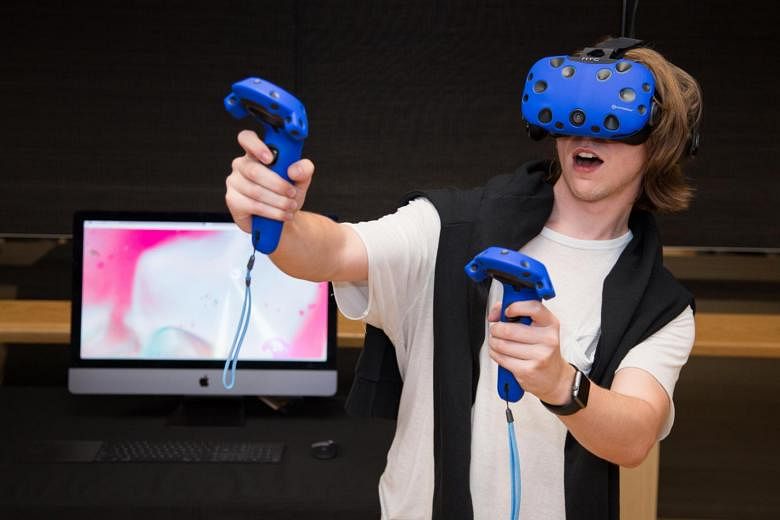SINGAPORE - Visitors to the ArtScience Museum will not only be able to piece Duplo bricks together, but also see their plastic creations come to life on a wall-length screen.
At the Animaker Asia exhibit, visitors can transform the blocks into animated versions of endangered South-east Asian wildlife such as orangutans and Javan rhinoceroses, with the use of an artificial intelligence creation engine.
Illustrator Andre Wee, 29, designed the digital versions of these creatures for this year's MeshMinds 2.0: ArtxTechforGood art exhibition, which opens on Thursday (March 7).
Says Mr Wee: "I hope that by having a hand in the creation of this artwork, visitors can gain a sense of ownership of these animals."
Organised by not-for-profit arts outfit The MeshMinds Foundation, the second edition of the technologically-driven art exhibition will feature around 20 immersive artworks and experiences by more than 25 artists, with a focus on environmental sustainability.
Ms Kay Vasey, founder of The MeshMinds Foundation, says: "We want to tackle global challenges from an Asian perspective. If we always talk about it from the perspective from the West, where are the Asian voices?"
For Lasalle College of the Arts undergraduate Yashini Renganathan, 29, the exhibition is a chance for her to zoom in on light pollution with her 3D printed artwork Sabaism. Light pollution refers to the excessive brightening of the night sky by artificial lighting.
Singapore had the highest rate of light pollution in the world in 2016 but the issue is still rarely discussed, she says.
Ms Yashini used a light metre to record luminosity levels at the brightly lit Helix Bridge and the darker Punggol Park, then transformed the data into two 3D printed figures.
"People can't touch or feel light pollution, so I wanted to show them what it could look like by making physical representations of the data," says Ms Yashini.
Likewise, illustrator Adeline Tan, 35, aims to make the issue of responsible consumption and production more tangible through the immersive virtual reality game Water Bodies.
Visitors will be transported into a virtual human stomach populated by tiny marine creatures and microplastics. They will have one minute to shoot as many of the pollutants to learn of their origins, which range from plastic bags to cigarette buds.
A scoreboard at the end will reveal the largest plastic offender, along with tips to reduce their usage.
Ms Tan was drawn to the issue of plastic pollution after reading a 2018 BBC article which reported that microplastics were present in 93 per cent of bottled water in countries such as the United States.
"Plastic pollution is not just in the sea or landfills, and it's not just choking seagulls. I wanted to show that this is not a distant problem, and our trash could even already be in us in the form of microplastics."
BOOK IT / MeshMinds 2.0: ArtxTechforGood
WHERE: ArtScience Museum
WHEN: March 7 to 17, 10am to 7pm (last admission 6pm)
ADMISSION: Free
INFO: Go to www.meshminds.com

